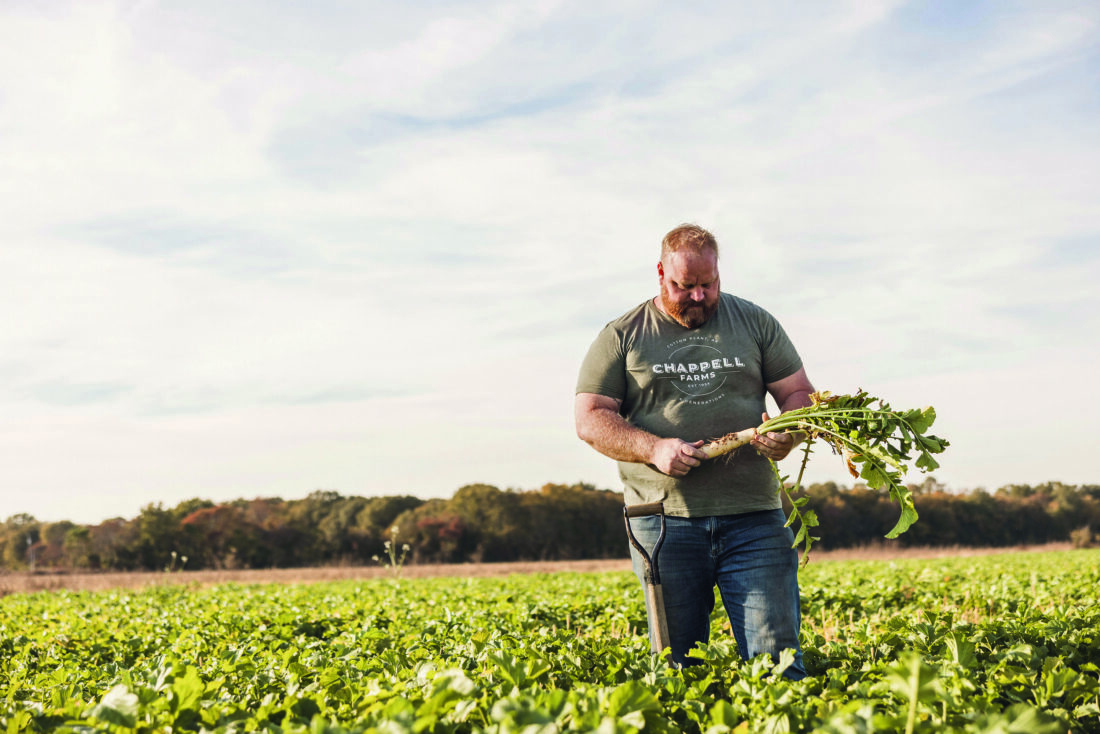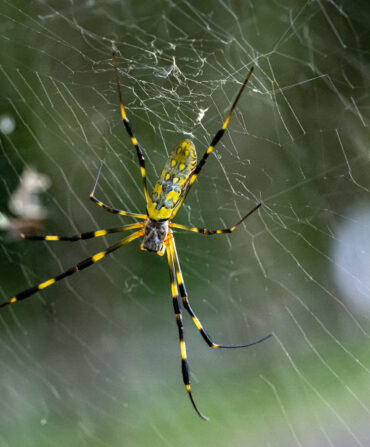Once a year, in spring or summer, Adam Chappell’s small home garden in Cotton Plant, Arkansas, draws an audience. Farmers, often numbering well over a hundred, crowd the perimeter, looking down at his stock of broccoli, cabbage, cauliflower, and potatoes. There’s a little confusion as Chappell points out the alternating layers of compost and hay, the dark black earth breathing underfoot—but then he explains how these old-school principles of cover crops, no-till farming, and regenerative agriculture the plot demonstrates can be applied on a large scale.
Then he shows them the 6,300-acre farm that shouldn’t work.
For the past fifteen years—since Chappell’s despairing revelation that chemical costs were driving him to the poorhouse sent him down a YouTube-slash-scientific-journal rabbit hole—the forty-four-year-old has made his farm an ongoing and improbably successful experiment. Rather than treating his spread like a chemistry set, however, he’s focused on biology. Pairing his soybeans with, say, barley, cereal rye, and radishes. Allowing decomposition to return nutrients to the soil naturally.
Along the way, “I was worried to death I was doing something wrong,” he says, “because I was getting told I was doing something wrong all the time.” After trial and error, however, those efforts converted what had once been “gunpowder dry” soil into rich, dark-colored earth webbed with beneficial mycelium and riddled with earthworm burrows, saving untold hours of labor and capital and diminishing the need for environmentally harmful herbicide.
That’s precisely why these farmers arrive on Chappell’s doorstep—and why he’s spent years taking his spiel on the road, from the Dakotas down to Georgia, and co-founded the Arkansas Soil Health Alliance with a group of like-minded farmers: because he knows that anyone showing up to listen to him talk is probably as desperate as he once was. Although not everyone’s a believer (“I like people telling me that I can’t do something when I’ve been doing it for fifteen years”), he knows that these methods—the same ones familiar to his dad and grandfather before everything became bigger and faster—can work.
In the future, Chappell aims to figure out how to rotate in livestock—sheep, cattle, and the like—to complement what he’s doing in the field. Until then, his goal is simply to make himself available to other farmers. “I’m just here to help if somebody wants help,” he says. “I don’t try to tell anybody how to farm or that my way is better.”
* * *
Expertise: Agriculture
Location: Cotton Plant, Arkansas
Farmer since: 2006
Key tenants: Chappell is used to hearing from skeptics who point to his family’s long ties to the land: “‘Well, you’re fourth generation, y’all got all that family land, it doesn’t matter if you don’t make top yields.’ And I say, ‘No, that’s not right at all. We’re fourth-generation tenant farmers.’”








